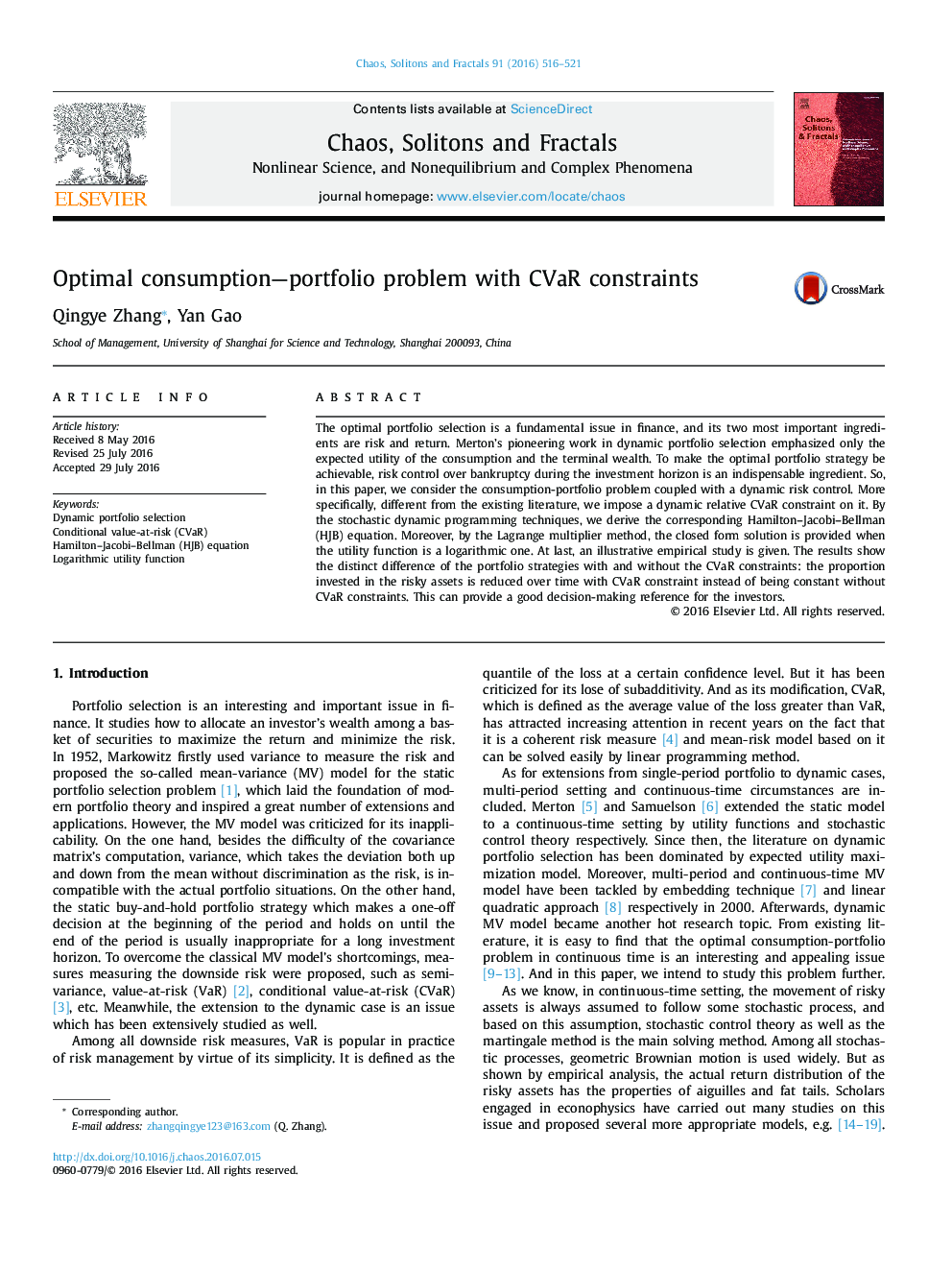| Article ID | Journal | Published Year | Pages | File Type |
|---|---|---|---|---|
| 8254640 | Chaos, Solitons & Fractals | 2016 | 6 Pages |
Abstract
The optimal portfolio selection is a fundamental issue in finance, and its two most important ingredients are risk and return. Merton's pioneering work in dynamic portfolio selection emphasized only the expected utility of the consumption and the terminal wealth. To make the optimal portfolio strategy be achievable, risk control over bankruptcy during the investment horizon is an indispensable ingredient. So, in this paper, we consider the consumption-portfolio problem coupled with a dynamic risk control. More specifically, different from the existing literature, we impose a dynamic relative CVaR constraint on it. By the stochastic dynamic programming techniques, we derive the corresponding Hamilton-Jacobi-Bellman (HJB) equation. Moreover, by the Lagrange multiplier method, the closed form solution is provided when the utility function is a logarithmic one. At last, an illustrative empirical study is given. The results show the distinct difference of the portfolio strategies with and without the CVaR constraints: the proportion invested in the risky assets is reduced over time with CVaR constraint instead of being constant without CVaR constraints. This can provide a good decision-making reference for the investors.
Keywords
Related Topics
Physical Sciences and Engineering
Physics and Astronomy
Statistical and Nonlinear Physics
Authors
Zhang Qingye, Gao Yan,
